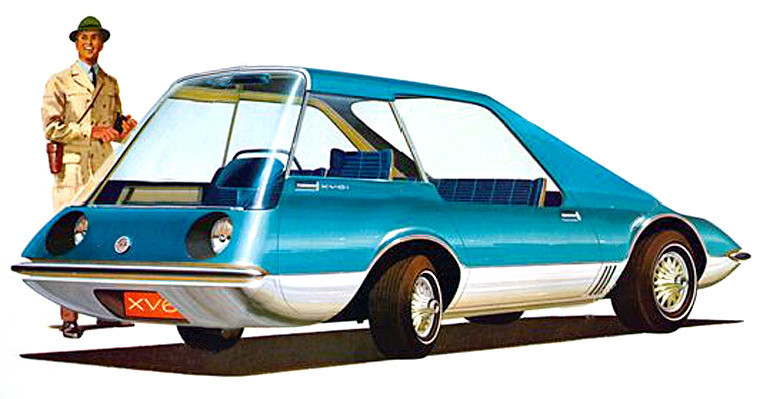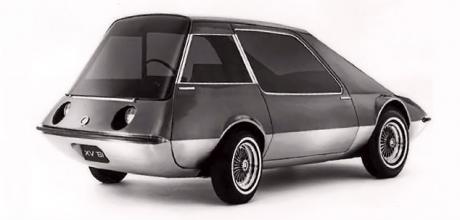1961 McLouth XV’61
Meet the McLouth XV’61, the commuter concept you’ve never heard of!
From here to obscurity
Of all the many concept cars that emerged during the 1960s, few – if any – are as obscure as this commuter capsule. Fewer still appeared as futuristic while grounded in reality, if only stylistically. But then the XV’61 (eXperimental Vehicle 1961) was styled by Syd Mead, the man who had shaped all manner of remarkable machines, co-authoring the description-defying Ford Gyron among others. This may have been just another freelance gig at the time, and one forgotten by history, but it wasn’t without merit.

It was built at the behest of the McLouth Steel Corporation of Detroit, Michigan, and exhibited at the April 1961 New York International Automobile Show. When viewed in retrospect, the XV’61 could almost pass for a prototype AMC Pacer. The front doors on this rear-engined, cab-forward machine rode above the front wheels, a feature that would soon become commonplace in light commercial vehicles. The rear doors were also much larger than those at the front. The rear end, by contrast, featured a dramatically arced ‘C’ panel, while chrome tinsel was kept at a minimum. The headlight arrangement, by contrast, also lent it a certain doe-eyed look. It had character, that’s for sure.
The McLouth may have looked like a car from the future, but it was clearly the near future. It was also rear-engined, although no details were ever released of what that powerplant might be. In reality, it was clearly a ‘pushmobile’ exhibit; a mock-up, but here’s the kick: it was unique among its contemporaries in that it wasn’t really a car at all. According to the firm’s press release from the period, it was intended to be used in union with some form of advanced monorail system; one that hadn’t been created yet. That should place it up there with the likes of hovercars and nuclear-powered people-movers as pure whimsical fluff.
But bear with us. The press release stated: “Transportation engineers and planners believe that future travel will rely heavily on monorail systems for the safe, convenient and rapid transportation of people and goods between distant points. Nearly all systems proposed to date make use of multi-passenger trains. Few, if any, have considered the monorail as a means of transporting personal vehicles from point to point so that the traveller may have private transportation at his destination...”
The vehicles would be affixed to a platform “… which was mounted on a section of the monorail track”. It also claimed that vehicles could then “… be carried safely at speeds exceeding 100 miles per hour”.
There are so many mysteries surrounding this machine, but that is understandable given that it was consigned to history’s dustbin almost immediately. The world clearly wasn’t ready for a car-cum-monorail thingamajig. As to the fate of the prototype, who knows? It wasn’t exhibited subsequently so we surmise that it was broken up. As for the man who shaped it, Mead continued to work as an industrial designer, cars being only a small part of his repertoire. He is much better known as the pre-eminent movie futurist of his day. After all, Mead was the visual artist who dictated the look of films such as Tron and Blade Runner.


